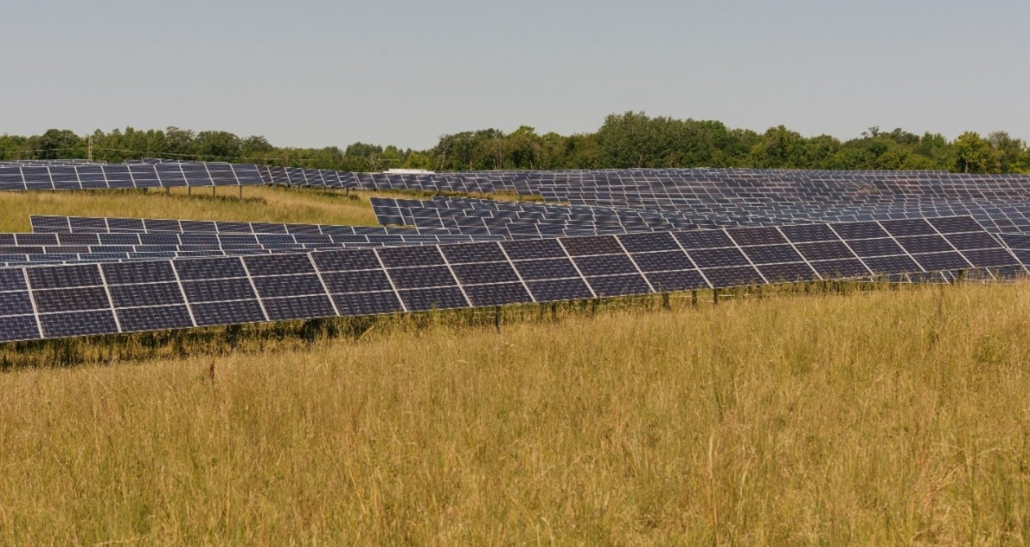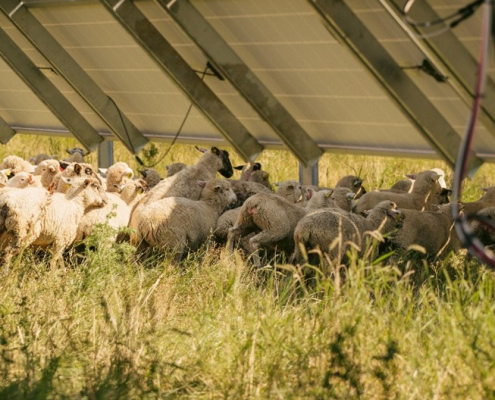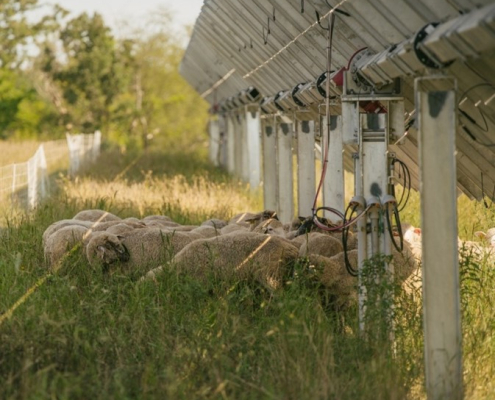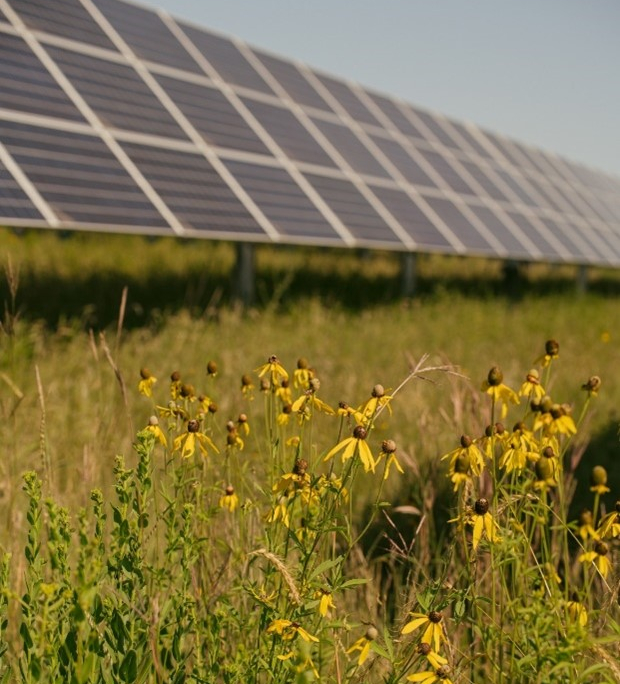
Lake Pulaski is an agrivoltaic solar power plant site developed by Enel Green Power that spans over 68.2 acres in Buffalo, Minnesota. This site is one of 16 developed for the Aurora Distributed Solar LLC project in 2017, supporting pollinators, grazing, and an apiary. The layout consists of 34,668 panels at 315 watts each, spanning over 500 individual arrays. The total plant system size is 10.92MW (dc). Each panel has a SolTech single, horizontal axis tracker to follow the sun path and optimize production. This tracker was chosen over the more standard axis-pole trackers due to their ability to allow curves in the array installation to accommodate the rolling landscape. The developers strived to install the system with minimal land disturbance to maintain the landscape and reduce excavation, thus allowing the panels to move with the rolling hills. Panel height was design to be approximately 2.5 fee from the ground at the maximum tilt angle of 45o to allow grazing sheep to pass under without harm to sheep or panels. This sets the total height of each array at a maximum of 10 feet.


The landscape is grazed once a year near the end of September for one month to reduce the need for mowing, save on labor and gas, and maintain a healthy soil chemistry. Graduate students at Temple University in Pennsylvania are conducting studies on the benefits of grazing, such as soil composition, a reduced mowing, and a reduction in spraying for weeds. Eight of the 16 Aurora project sites are grazed for research purposes. Occasional mowing is required if the area has a high-growth year. Minnesota Native Landscapes (MNL) developed the original native seed profile to help promote pollinator activity under the panels. The final seeding was completed by Westwood Professional Services. MNL also maintains the pollinator and native landscape. Bare-grounded spraying is used to kill off unwanted invasive species, such as thistle. These areas are then fenced off to prevent wildlife and sheep in the area. Soil samples are taken from sprayed and mowed areas for research. Lake Pulaski also promotes the bee population by allowing bee farmers to move their hives next to the site to help pollinate the area and grow healthier bees.



Lake Pulaski is not without maintenance needs. The enormity and complexity of the site requires technicians, plant experts, landscapers, and sheep farmers to ensure that the site function as designed. Enel Green Power does most of the technical maintenance, while MNL sprays and maintains the plants. The SolTech trackers require slightly more maintenance than pole trackers, and they can go offline due to storms, sheep knocking the sensors, and other natural causes. Background research is being conducted by ENEL to determine whether the tracking system is worth the extra maintenance. At the end of the site’s service life, which is typically 25 years, the developers hope to decommission the system and return the land to agriculture with richer soil than the gravel alternative and unharmed adjacent landscapes. The research from this site will help quantify the benefits that agrivoltaics can bring to both solar development and agriculture industries.
